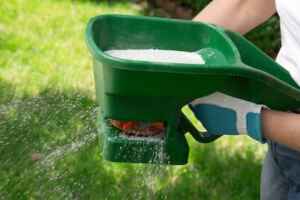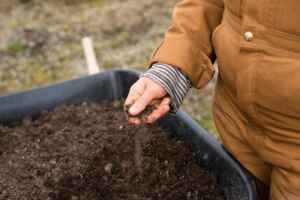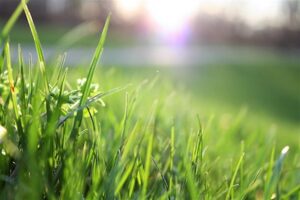What Is Lawn Dressing And Is It Necessary?
We all want a lush, green lawn. While there are many ways to achieve this goal, lawn dressings are the best way to get a greener healthier lawn!
So, what is dressing for your lawn? Dressing for your lawn is a lawn weed control or lawn fertilizer. It puts essential nutrients and amendments back in the soil where they belong. Things like calcium, sulfur, and iron. The most common of these elements found in fertilizers are nitrogen which can be toxic to grass if too much is applied or not leeched deep enough into the soil where roots take their nourishment from.
Lawn dressing also helps lawns recover from damage or wear and tear, making it a vital part of lawn care. The other key ingredient to applying dressings is proper timing. Keep reading to learn more about why you should consider dressing your lawn!
How Often Should I Dress My Lawn?
This depends on what kind of weeds you have in your lawn and how badly they are affecting the health of your lawn. If you have certain types of grasses, then you can apply more because that will help them thrive better. Different kinds of weed require different treatments too.
Never apply lawn dressing when there is a drought or during dryer months because that will only cause more harm than good. You have to consider how your lawn’s weight will hold up underneath something so heavy as a lawn dressing before applying it. This also depends on if you’ve chosen a lawn fertilizer or weed killer, especially if you have bamboo or other plants.
The best way to find out how to treat your turf is through professional guidance because each area requires a different amount of nutrition to maintain its healthiness.
What Lawn Dressings Are Available?
There are three main types of lawn dressings: lawn weed control, lawn fertilizer, and lawn renovation.
 A lawn weed control dressing helps treat your lawn against weeds. There are different kinds of weedkillers for different types of lawns. If your lawn has a lot of moss growing on it, then you need to use a moss killer too.
A lawn weed control dressing helps treat your lawn against weeds. There are different kinds of weedkillers for different types of lawns. If your lawn has a lot of moss growing on it, then you need to use a moss killer too.- Fertilizer also assists with the growth and healthiness of your grasses, but this comes down to preference as far as what type and how much you should apply (for instance, some people like using organic fertilizers like compost).
- Renovation is when your lawn needs to recover from damage or wear and tear. Lawn renovation dressings help lawns recover from lawn damage. In cases of brown spots, for example, lawn renovation drenches the area with lawn restoration nutrients.
What Do Lawn Dressings Do?
Lawn dressings provide various benefits, including:
- promote greener and healthier turf grass
- protect against fungi and lawn diseases
- even lawn color
- prevent lawn damage from insects and lawnmowers
How Much Topsoil Do I Need?
The best option would be to visit a company that offers professional landscaping services. They will come out, test your soil and recommend how much organic material you need for your soil. However, note that this is not cheap. It’s basically like calling an exterminator to get rid of all the pest infestation in your house.
Bear in mind that they have measurements by a cubic meter or cubic yard which means nothing to most people. It’s usually better to take their word for it than try adding up all the numbers yourself unless you’re good with math problems. Plus, knowing just how much you need is not critical unless you’re planning on planting a lot of trees. For most people, an estimate from a landscaper would be sufficient enough to plan your landscape accordingly.
Determining the Weight of Lawn Dressing
The next step would be to rely on measurements that are easy for almost everyone to understand. If you’ve ever ordered anything from a hardware store, you’ll know what a cubic meter or cubic yard of anything looks like. A cubic yard roughly equals a barrow and a half.
So if somebody tells you that they need 10 cubic yards of topsoil, it’s the same as 15 standard wheelbarrow loads. If you have your equipment, then that’s not a big deal. Just add up the measurements yourself, but if not, you can always speak with a professional or an associate at your local hardware store.
How Much Lawn Dressing Do You Purchase?
The short answer is to use the same figure as if it were dry topsoil or mulch. It doesn’t matter what form your dressing takes (dry versus wet) because they all add up to the same thing. Nutrients and organic materials, which constitute a greater volume, give you more yield for less money per unit weight. Unlike some other nutrients such as salts and trace elements, organic fertilizers weigh approximately 10% more once dissolved in water.
How Do You Know What Type of Product to Buy?
 The soil that’s under your grass provides structure and nutrients for the plant, as well as giving it anchoring support. But what happens when soil isn’t working?
The soil that’s under your grass provides structure and nutrients for the plant, as well as giving it anchoring support. But what happens when soil isn’t working?
Your lawn starts to show signs of wear, weed growth increases, mosses take root, or – worse yet – you have water pooling in some areas. These are all clues that something might be wrong with your soil foundation. But how can you tell what’s missing? And how do you fix it?
The answer comes down to understanding the different types of soils available and their characteristics so you can adjust accordingly. You should further investigate if you need sand or clay in your mix, cemented layers, compaction, gravel, etc.
Various Soil Types and Their Characteristics
Sand
- Brings good drainage with low nutrients needed.
- Can be too harsh on grassroots if left on for extended periods due to water running right through it easily, often resulting in erosion.
- Offers higher pH levels than other soils.
- If your goal is low-maintenance turf, you can bring sand into your mix if you have sandy soil but keep in mind that this will increase drainage so it might dry out too quickly.
Clay
- Offers poor drainage and nutrient content.
- Offers low pH levels and is very alkaline.
- Drains poorly, which can lead to flooding or pooling problems.
- Compaction is common, so do not walk on the soil after heavy rains without preparing the lawn first.
- If you’re going for a more impressive look with higher standards of care, clay might be better. It’s less affected by weather conditions and needs less water compared to sand. Water retention helps with keeping the plant healthy during dry periods without extra irrigation.
Silt
- Drains well causing good aeration.
- Root penetration can be heavy due to high water retention.
- Does not hold nutrients and is easily leached by rain without nutrient replenishment.
Gravel
- Excellent drainage through poor nutrient content.
- Adds volume for larger lawns but generally too large to sustain plant life.
- Poor water retention
Loam
- Well-draining, nutrient-rich, and porous.
- Naturally occurring soil mixes will include anywhere from 20 – 50% sand or silt. The rest is made up of silt and clay in equal amounts with small amounts of organic matter (e.g., leaf litter), gravel (fine particles), and stones (coarser particles).
For your soil foundation, you want to choose a loam as it is the best all-around option. Just keep in mind that with most loams the pH levels will be on the high side and nutrient availability will be below.
Benefits of Lawn Dressings
 Lawn dressings can be a vital part of maintaining a lawn. They add fertilizer and organic matter to the soil. As well as allow for deeper watering and better penetration of water and oxygen into the soil.
Lawn dressings can be a vital part of maintaining a lawn. They add fertilizer and organic matter to the soil. As well as allow for deeper watering and better penetration of water and oxygen into the soil.
Lawn dressing can also reduce surface compaction allowing roots to grow more easily. Lawn dressings should be performed every two to three years when growing turfgrasses in warmer temperate climates. Maintaining this type of schedule can help with preventing soil from becoming compacted from heavy foot traffic or machinery.
In cold temperate regions, where there is snow cover throughout winter, lawn dressings may only need to be applied every five years because the compaction from snow cover will not happen during winters in these regions.
It is most important to remember why you may need lawn dressing. The goal is for lawn weed control/lawn fertilizer that provides lawn seeds with the necessary nutrients they need to grow. This helps lawns recover from damage or wear and tear, making it a vital part of lawn care programs. Dressing for lawn should be applied in late spring when the grass is growing quickly.
Any plant growth will benefit from dressing for lawn, but certain plants require different dressings depending on what you want them to look like. Different kinds of weed require different treatments too. With that being said, what you put into your soil is up to you. But keep in mind the nature of your weed and weather conditions when choosing the right dressing for your lawn.
Ultimately, the best way I found out how to treat my lawn is through professional guidance and asking questions. My lawn looks greener and healthier after I found the best combination of soil type and lawn dressing!

